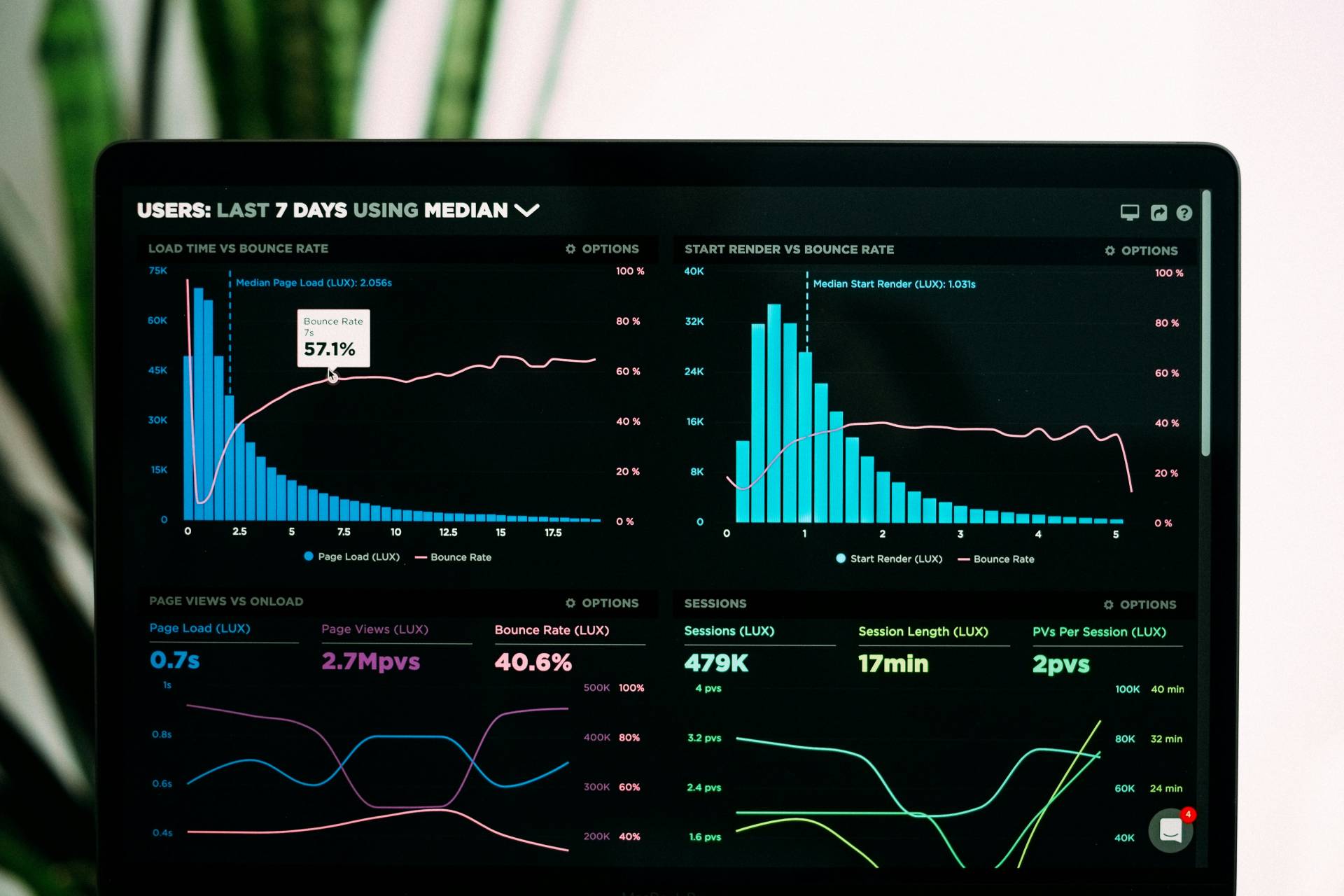An effective brand strategy forms the backbone of a business’s journey to success. Brands like Nike, LuluLemon, MailChimp, and Hubspot have demonstrated its importance in the digital marketing landscape. However, understanding what brand marketing metrics to track and measure can be a challenge.
This article is a comprehensive guide to 14 essential brand marketing metrics that will propel your branding game in 2024 and beyond.
Top 14 Brand Metrics to Track in 2024
Let’s delve into the 14 brand marketing metrics that can help you assess your brand’s performance and guide your future strategies.
1. Brand Awareness
This metric gauges how well consumers recognize your brand. It’s a fundamental indicator of your brand’s value and should be a regular fixture in your brand metrics toolkit. You can track brand awareness through surveys, social media engagement data, and general campaign impressions.
2. Brand Consideration
Once a customer is aware of your brand, brand consideration measures how likely they are to purchase from you. Surveys or careful monitoring of your market share following branded campaigns can help measure this metric.
3. Brand Associations
Brand associations outline which brands customers link you with and how strongly they feel about this connection. These associations can help you identify potential competitors and partnership opportunities.
4. Customer Satisfaction
A central metric to any positive brand movement, customer satisfaction can be measured via brand health surveys soliciting customer opinions. High customer satisfaction indicates a likelihood of repeat purchases and a positive perception of your brand.
5. Brand Perception
This metric measures what customers think of your brand. Are your products perceived as good value? Do you offer unmatched quality? Brand perception can be measured through survey data, supplemented by metrics like customer satisfaction scores or net promoter scores.
6. Brand Salience
Brand salience measures whether customers remember your brand. For instance, if a quick-service brand wanted to measure salience, they could ask members of their target audience to name ten quick-service restaurants. If their brand name consistently appears on that list, their brand salience is likely strong.
7. Brand Loyalty
Brand loyalty describes how likely a consumer is to make repeat purchases or try new products from your brand. Brand health surveys or repurchase data can help assess customer loyalty.
8. Brand Sentiment
This metric helps marketers understand their organization’s reputation among certain groups. It can be used to identify how campaigns are shaping overall perceptions of your brand and also be tied directly to ROI.
9. Net Promoter Score (NPS)
The classic question, “How likely are you to recommend this product to a friend?” is used to determine your NPS. This metric helps you determine whether a customer would recommend your brand to others.
10. Brand Equity
This composite metric measures how much your brand is worth, both socially and financially. By generating awareness, delivering on promises, and aligning with your target audience’s values, you’re bound to increase your brand equity.
11. Viewable Impressions
Viewable impressions is a basic branding metric to track. This metric counts if 50% of the ad or more is viewable for one second (display ads) or two seconds (video ads).
12. Branding Linkage
Branding linkage measures if a viewer can associate an unbranded marketing effort from your business with your brand. Creative testing surveys and A/B testing can be used to measure this metric.
13. Visibility
Visibility, or your brand’s share of voice, refers to the proportion of advertising, online mentions, and PPC your brand has compared to all the competitors in your niche.
14. Persuasion
Measuring persuasion helps determine the effectiveness of your branding efforts. It can be measured through consumer surveys or cohort analysis within a customer journey.
Understanding the Importance of Brand Metrics
In the evolving landscape of brand marketing, the role of brand metrics has become increasingly significant. These metrics serve as a crucial tool for marketers to assess the health of their brand and gauge the effectiveness of their marketing campaigns. They offer a quantitative basis for evaluating the long-term Return on Investment (ROI) associated with marketing efforts, reflecting the intrinsic value of a brand beyond mere sales figures.
Why Brand Metrics Matter
- Data-Driven Insights: In an era where data reigns supreme, brand metrics provide essential insights that drive strategic decisions. They enable marketers to move beyond guesswork and base their strategies on tangible evidence.
- Brand Health: Brand metrics illuminate various aspects of a brand’s health, such as awareness, loyalty, and perception. Understanding these elements is crucial for maintaining and enhancing the brand’s position in the market.
- Campaign Performance: By tracking the performance of marketing campaigns through specific metrics, marketers can identify what resonates with their audience. This helps in optimizing current campaigns and shaping future strategies.
- Customer Engagement: Engagement metrics shed light on how consumers interact with the brand across various platforms. This information is vital for fostering strong relationships and improving customer experiences.
- Competitive Benchmarking: Brand metrics allow businesses to benchmark their performance against competitors, identifying strengths to capitalize on and weaknesses to address.
The Story Behind the Numbers
While numbers are informative, the real power of brand metrics lies in the stories they tell. By analyzing trends, patterns, and shifts in these metrics, marketers can gain deeper insights into consumer behavior, brand perception, and market dynamics. This holistic understanding is crucial for developing strategies that not only attract customers but also build lasting brand loyalty.
The Demand for Precision
In today’s fast-paced marketing environment, the demand for precise and actionable insights is higher than ever. Brand metrics meet this need by providing clear, concise data that can inform every aspect of brand strategy—from product development to customer service. This precision enables brands to stay agile, adapt to market changes, and meet evolving consumer expectations.
In summary, brand metrics are not just numbers; they are the navigational beacons guiding brands toward sustained growth and success. As we move into 2024, the ability to effectively measure, interpret, and act on these metrics will be indispensable for any brand looking to thrive in the competitive marketplace. Understanding and leveraging the full potential of brand metrics will be key to unlocking new opportunities and driving long-term ROI.
Integrating Brand Metrics into Strategic Planning
Integrating brand metrics into strategic planning is not just beneficial—it’s essential for the sustained growth and success of any business. This integration allows organizations to make informed decisions that align with their brand’s long-term goals and market position. Here’s how you can seamlessly weave brand metrics into your company’s strategic planning:
1. Align Metrics with Business Objectives: Start by ensuring that the brand metrics you track are aligned with your overall business objectives. Whether it’s increasing market share, enhancing customer satisfaction, or improving brand awareness, each metric should serve as a ladder to reach your strategic goals. Define clear, measurable targets for each metric to provide direction and focus.
2. Regular Data Collection and Analysis: Implement a system for regular data collection and analysis. This could involve monthly reviews of brand health surveys, weekly tracking of social media engagement, or quarterly assessments of brand equity. The key is consistency and precision in how data is collected, ensuring it provides a reliable basis for strategic decisions.
3. Cross-departmental Collaboration: Brand metrics should not be the sole concern of the marketing department. Encourage collaboration across departments—product development, sales, customer service, and marketing should all contribute to and utilize brand metric insights. This cross-functional approach ensures a unified strategy that aligns with the brand’s values and goals across all touchpoints.
4. Responsive Strategy Adjustments: Use the insights gained from brand metrics to make responsive adjustments to your strategy. If brand awareness is low, consider ramping up your marketing efforts or reevaluating your message. If customer satisfaction is declining, investigate the underlying causes and address them promptly. The ability to pivot and adapt based on concrete data is a hallmark of a dynamic and resilient brand strategy.
5. Integrate Metrics into Reporting: Make brand metrics a regular part of your business reporting. This not only highlights their importance but also keeps stakeholders informed about the brand’s performance and health. Transparent reporting fosters a culture of accountability and continuous improvement.
6. Leverage Technology and Tools: Utilize marketing analytics platforms and tools to streamline the tracking and analysis of brand metrics. These technologies can offer real-time data, trend analysis, and predictive insights, enhancing the efficiency and depth of your strategic planning.
7. Educate and Empower Teams: Ensure that all team members understand the importance of brand metrics and how they relate to the company’s strategic goals. Training sessions, workshops, and regular updates can help demystify metrics and empower employees to contribute to brand growth.
8. Monitor and Learn from Competitors: Keep an eye on your competitors’ brand metrics where possible. Learning from their successes and failures can provide valuable insights that can be applied to your own strategic planning. However, always tailor these insights to fit your unique brand identity and market position.
9. Continuous Learning and Evolution: The digital marketing landscape is ever-changing, and so are consumer behaviors. Regularly review and update your understanding of how different brand metrics reflect these changes. Stay informed about new metrics, tools, and techniques that can enhance your strategic planning process.
By integrating brand metrics into strategic planning, businesses can create a more focused, data-driven approach to brand development. This not only improves the efficiency and effectiveness of marketing efforts but also drives long-term growth and strengthens the brand’s position in the competitive landscape. Remember, successful brand management is an ongoing process of measurement, analysis, and adjustment. By making brand metrics a central part of your strategic planning, you ensure that your brand remains dynamic, relevant, and aligned with your business objectives.
Technology and Tools for Tracking Brand Metrics
In today’s digital age, leveraging the right technology and tools is essential for accurately tracking and analyzing brand metrics. These solutions enable businesses to collect, interpret, and act on vast amounts of data efficiently. Here’s an overview of the types of technology and tools that can empower your brand metrics tracking efforts:
1. Analytics Platforms: Web and social media analytics platforms like Google Analytics, Adobe Analytics, and Sprout Social provide detailed insights into how users interact with your brand online. These tools can measure website traffic, user behavior, social media engagement, and conversion rates, offering a comprehensive view of your online brand presence.
2. Customer Relationship Management (CRM) Software: CRM systems like Salesforce, HubSpot, and Zoho CRM help track customer interactions, purchase history, and feedback across all touchpoints. By centralizing customer data, these tools provide valuable insights into customer satisfaction, loyalty, and brand perception.
3. Brand Monitoring Tools: Brand monitoring tools such as Mention, Brandwatch, and Hootsuite Insights allow you to track mentions of your brand across social media, blogs, and other online platforms. These tools are essential for understanding brand sentiment, awareness, and the effectiveness of your content strategy.
4. Survey and Feedback Tools: Survey platforms like SurveyMonkey, Google Forms, and Typeform facilitate the collection of customer feedback and opinions. They can be used to conduct brand health surveys, measure customer satisfaction, and gauge brand perception among your target audience.
5. Net Promoter Score (NPS) Software: Tools specifically designed to measure NPS, such as Delighted, AskNicely, and Satismeter, help you understand customer loyalty and the likelihood of your customers recommending your brand to others.
6. Market Research Tools: Platforms like Qualtrics, Nielsen, and Kantar provide in-depth market research capabilities. These tools can help identify brand associations, measure brand equity, and understand your position within the market relative to competitors.
7. Dashboard and Reporting Tools: Dashboards like Tableau, Microsoft Power BI, and Domo can aggregate data from various sources into a single, visual report. These tools provide a clear overview of your brand metrics, making it easier to share insights with stakeholders and make informed decisions.
8. Advertising and Campaign Analytics: Tools integrated into advertising platforms (like Facebook Insights or Google AdWords) offer metrics specific to marketing campaigns, such as viewable impressions, branding linkage, and persuasion measures. They allow you to evaluate the direct impact of your advertising efforts on brand recognition and engagement.
Choosing the Right Tools: Selecting the right tools depends on your specific brand objectives, the types of metrics you need to track, and your budget. It’s important to:
- Assess Your Needs: Identify the brand metrics that are most relevant to your strategic goals.
- Integrate Your Tools: Ensure that your chosen tools can integrate with each other and with existing systems for seamless data collection and analysis.
- Train Your Team: Equip your team with the knowledge and skills to use these tools effectively.
- Regularly Review: Continuously assess the effectiveness of your tools and stay updated on new technologies that could enhance your brand metrics tracking.
By investing in the right technology and tools, businesses can gain a deeper understanding of their brand’s performance, uncover actionable insights, and refine their strategies for better outcomes. Remember, the goal is not just to collect data, but to turn that data into actionable insights that drive your brand forward.
The Path Forward
Creating a strong brand is a deliberate process that requires dedication, insight, and ongoing adjustment. Metrics play a foundational role in this journey, offering clear insights into the effectiveness of your brand strategy and the resonance of your brand within the target market. They are the vital signs of your brand’s health and the compass guiding your strategic decisions.
Implementing a Data-Driven Approach: To harness the full potential of brand metrics, it’s essential to integrate a marketing analytics platform dedicated to brand tracking. Such a platform can offer a comprehensive view of your brand’s performance across various dimensions, enabling you to measure the impact of your strategies accurately. This approach not only illuminates areas of strength and opportunity but also helps identify shifts in consumer perception and market dynamics.
Gaining Target Market Insights: By monitoring the right brand marketing metrics, you can acquire a deeper understanding of your target audience’s needs, preferences, and behaviors. This knowledge is invaluable, as it allows you to tailor your messaging, offerings, and campaigns to more effectively meet consumer demands and stand out in a crowded market. Informed decision-making, based on solid data, paves the way for a more refined and effective brand strategy.
Demonstrating Value and Justifying Investments: In the world of marketing, demonstrating the ROI of your efforts is crucial. By tracking the appropriate metrics, you can highlight the tangible impact of your team’s work, justifying the need for continued or increased investment in branding initiatives. This evidence-based approach can secure buy-in from stakeholders and allocate resources more effectively, ensuring that your branding efforts are both sustainable and scalable.
Continuous Brand Growth: Equipped with the right metrics, your brand is poised for continued growth and evolution. Tracking, measuring, and optimizing based on these metrics allows you to stay aligned with consumer needs, adapt to market changes, and consistently deliver value. This dynamic process ensures that your brand remains relevant and compelling, fostering long-term loyalty and advocacy among your customers.
The Road Ahead: As we look to 2024, the importance of brand marketing metrics becomes even more pronounced. In an ever-changing market, the ability to track and respond to brand performance is indispensable. Each metric you monitor, every insight you derive, is a step toward a deeper understanding of your brand’s place in the market and its path to growth. Embrace these metrics as tools of empowerment—for your brand, your strategy, and your organization’s future.
In conclusion, the path forward for any brand looking to thrive in the upcoming year and beyond lies in the strategic application of brand metrics. By making data-driven decisions, continuously refining your approach, and demonstrating the value of your branding efforts, you can elevate your brand to new heights and ensure its long-term success and resonance in the marketplace.
FAQ: Understanding Brand Marketing Metrics and Concepts
1. What are brand marketing metrics?
Brand marketing metrics are measurable values used by companies to track the performance and effectiveness of their brand marketing efforts. These metrics can include brand awareness, brand equity, customer satisfaction, and loyalty. They help businesses understand how well their brand is resonating with the target audience and influencing consumer behavior.
2. What is a KPI in branding?
KPI stands for Key Performance Indicator. In branding, a KPI is a specific metric used to measure the effectiveness of brand strategies and activities against predetermined targets. Common branding KPIs include net promoter score (NPS), brand awareness levels, brand recall, and customer engagement rates.
3. How do you measure brand marketing impact?
The impact of brand marketing can be measured through various metrics such as:
- Brand Awareness: Surveys and social listening tools to gauge how well people know the brand.
- Brand Equity: Customer’s willingness to pay a premium for your brand over competitors.
- Customer Loyalty and Retention: Repeat purchases and the percentage of customers who remain over time.
- Engagement: Interactions on social media, website traffic, and other forms of customer engagement.
4. What are Rajagopal’s 5 A’s of brand metrics?
Rajagopal’s 5 A’s of brand metrics are:
- Awareness: How many people know about the brand.
- Acceptability: The degree to which people like the brand and its products.
- Accessibility: How easy it is for consumers to find and purchase the brand’s products.
- Affordability: How consumers perceive the brand’s value in terms of price.
- Assurance: The level of trust and confidence consumers have in the brand.
5. What are the 5 A’s of branding?
The 5 A’s of branding are:
- Awareness: Making potential customers aware of the brand.
- Attraction: Drawing customers to the brand through interest and appeal.
- Affection: Developing a positive emotional connection with the brand.
- Attachment: Creating loyalty to the brand so that customers prefer it over competitors.
- Advocacy: Inspiring customers to recommend the brand to others.
6. What are brand metrics examples?
Examples of brand metrics include:
- Brand Recognition and Recall: Measures how easily people can identify and remember the brand.
- Customer Satisfaction: Assesses how happy customers are with the brand’s products or services.
- Net Promoter Score (NPS): Gauges the likelihood of customers recommending the brand to others.
- Share of Voice (SOV): The brand’s visibility in the marketplace compared to competitors.
7. What are the 5 C’s of branding?
The 5 C’s of branding are:
- Clarity: Being clear about what the brand stands for and its value proposition.
- Consistency: Delivering a uniform brand message and experience across all platforms and touchpoints.
- Commitment: Demonstrating dedication to brand values and promises.
- Connection: Building emotional bonds with the audience.
- Culture: Aligning the brand with cultural values and trends.
8. What is the 3 7 27 rule of branding?
The 3 7 27 rule of branding suggests that it takes:
- 3 seconds for a consumer to become aware of your brand.
- 7 times for them to recognize and remember your brand.
- 27 times for them to make a purchase decision based on brand recognition and recall. This rule emphasizes the importance of repeated exposure and consistent branding in influencing consumer behavior.
9. What is the rule of 7 in branding?
The rule of 7 in branding is a marketing principle that states a potential customer needs to see or hear a brand’s marketing message at least seven times before they take action and make a purchase. This underscores the importance of consistent and repeated messaging in building brand awareness and driving consumer actions.
Featured Image Credit: Photo by Luke Chesser; Unsplash – Thank you!
















